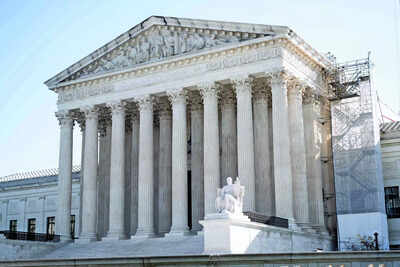Why this Supreme Court case could dismantle the wall between church and state in US schools – The Times of India

The US Supreme Court is set to hear a pivotal case that could reshape the separation between church and state, a principle that has governed American public education for decades. On April 29, 2025, the Court will hear arguments in Oklahoma Statewide Charter School Board v. Drummond, a case that questions whether the state must fund a Catholic charter school, despite constitutional protections against public funds being used for religious purposes.
This case centers on St. Isidore’s, a Catholic charter school in Oklahoma that has received approval to operate as a virtual institution. The school, rooted in Catholic doctrine, demands public funds to cover its operation costs, arguing that it is entitled to taxpayer support. The outcome of this case could set a dangerous precedent, allowing religious institutions to access public money for religious education, undermining the long-standing principle of church-state separation.
First Catholic charter school in the US
St. Isidore’s is the first Catholic charter school ever approved in the United States. The Oklahoma Statewide Charter School Board narrowly green-lighted the school to operate as a virtual entity, offering a fully accredited curriculum with a Catholic foundation. Unlike other charter schools that comply with state educational standards, St. Isidore’s insists on adhering to Catholic teachings and requires both students and teachers to follow Catholic doctrine. As reported by Slate, the school mandates that students attend mass and receive Catholic teachings, making it a religious institution, not just an academic one.
The school has now filed a claim for state funding, arguing that, under the US Constitution’s First Amendment, it has the right to public money. The school’s petition rests on the claim that the denial of funding violates its religious freedoms, as guaranteed by the Free Exercise Clause. This issue is compounded by the Oklahoma Constitution, which explicitly prohibits the use of public funds for religious institutions.
The case’s broader impact on US public education
As the case moves to the US Supreme Court, the consequences for the broader US education system are profound. If the Court rules in favor of St. Isidore’s, it would mark a major shift in the interpretation of the First Amendment and church-state relations in public education. Historically, the US has kept public funding separate from religious schools, ensuring that taxpayer dollars are not used to promote religious instruction. However, recent rulings have eroded that separation.
The Supreme Court has previously ruled that the Free Exercise Clause of the First Amendment may require public funding for religious institutions, even when the Establishment Clause would typically prohibit it. This shift in interpretation has been a growing trend over the last eight years, with the Court increasingly favoring religious freedom over the separation of church and state.
As reported by Slate, conservative justices on the Court are expected to support St. Isidore’s claim. “I think it’s pretty clear that at least four conservatives are ready to rule for the charter school,” said Slate’s Mark Joseph Stern. The Court’s decision in this case could fundamentally alter the relationship between religion and education in the US, opening the door for more religious schools to access public funds.
The fight over church-state separation
The case has sparked a broader debate about the role of religion in public education. Some critics argue that the US Constitution’s Establishment Clause must be upheld to maintain a secular public education system, while others contend that the Free Exercise Clause grants religious institutions the right to receive state support.
In addition to its potential implications for religious schools, this case comes amid other ongoing battles over educational content in US schools. The controversy over LGBTQ+ inclusion in textbooks in Maryland, for example, reflects a growing trend of challenging the boundaries of what is considered appropriate education in the public sphere. As noted by Stern, “It’s impossible to square these things,” referring to the contrasting views on indoctrination in US schools.
With the Supreme Court poised to make a landmark decision, the future of public education—and the separation of church and state—hangs in the balance.
















